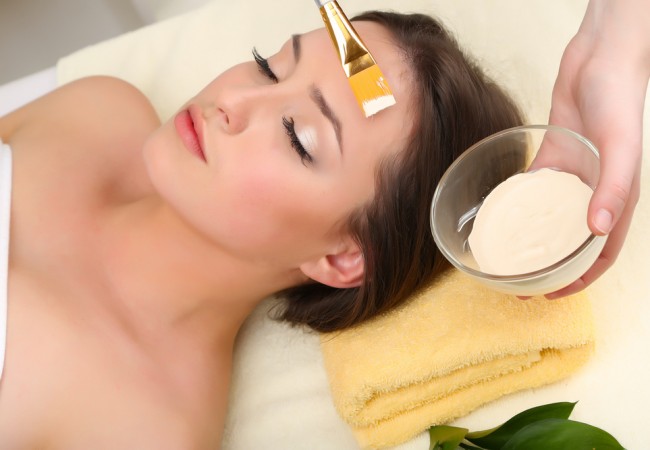
Chemical peels
As we age, our skin goes through specific changes. It thins and loses its elasticity, causing wrinkles and lines to form. Ageing skin has a tendency to become blotchy and freckled, especially if it has been overexposed to the sun.
A chemical peel is a procedure in which a chemical solution is applied to the skin to remove the top layers. The skin that grows back is smoother. Chemical peels create an excellent freshening effect but won’t remove deep lines because they don’t penetrate deeply enough. However, they will significantly help improve fine lines, particularly those under the eyes. In addition, these types of peels don’t create a waxy or pale look. On the contrary, they give the complexion a fresh, natural glow.
With a light or medium peel, you may need to undergo the procedure more than once to get the desired results.
Chemical peels are used to treat wrinkles, discoloured skin and scars — usually on the face. They can be done alone or combined with other cosmetic procedures. And they can be done at different depths, from light to deep. Chemical peels are perfect in combination with dermalplaning.
Chemical peels are usually done in a series of controlled treatments, usually, a course of 4-6 treatments are recommended. Aha peels are often comparable in their results to some deeper peels without complications.
Chemical peels are very versatile and used in the management of
- Fine lines and wrinkles
- Pigmentation problems
- Uneven skin tone
- Tan removal
- Dark lips and under eye dark circles.
- Open pores, very fine lines
- Acne, acne marks and scars.
Assessment?
It is required before your first treatment
Duration
20-30 minutes
Discomfort?
almost none
Downtime?
minimal to none
Treatments No.?
several
Longevity?
4-6 weeks
Treatment FAQ
A chemical peel uses acid to remove layers of damaged or aged skin, revealing newer, softer, younger-looking skin. The acids used range from very mild to very strong. Mild alpha hydroxy acids (AHA) can be used to remove a very minimal layer of skin, thus rejuvenating dull-looking skin. Stronger acids like trichloracetic acid (TCA) or phenol can be used for deep peels to correct acne scarring, serious pigmentation problems or fine wrinkles.
Before the peel, your skin will be cleansed and toned to remove natural surface oils. The chosen chemical will be applied gently to your skin in one or more layers. After a specified length of time, the aesthetic clinician will neutralise the acid and remove it from your skin, which is then wiped clean and treated with a moisturiser or antibacterial ointment.
You should expect to feel a slight tingling sensation, warmth and tightening of the skin during a peel treatment.
Your face might be red and may feel tight. There should be no significant discomfort.
You may go outside, but sunscreen must be worn for at least a few days after the peel as your skin will likely be a little more sensitive to sun exposure.
Many individuals find that a peel performed every four to six weeks gives optimal results. Glycolic acid peels complement the regular use of other products such as glycolic acid containing preparations that can be used on a regular basis at home. The short term exposure of a higher concentration of glycolic acid on a periodic basis helps maintain skin health and appearance.
A chemical peel will not remove deep lines. However, a peel will often improve the tone, texture, smoothness and appearance of skin.







